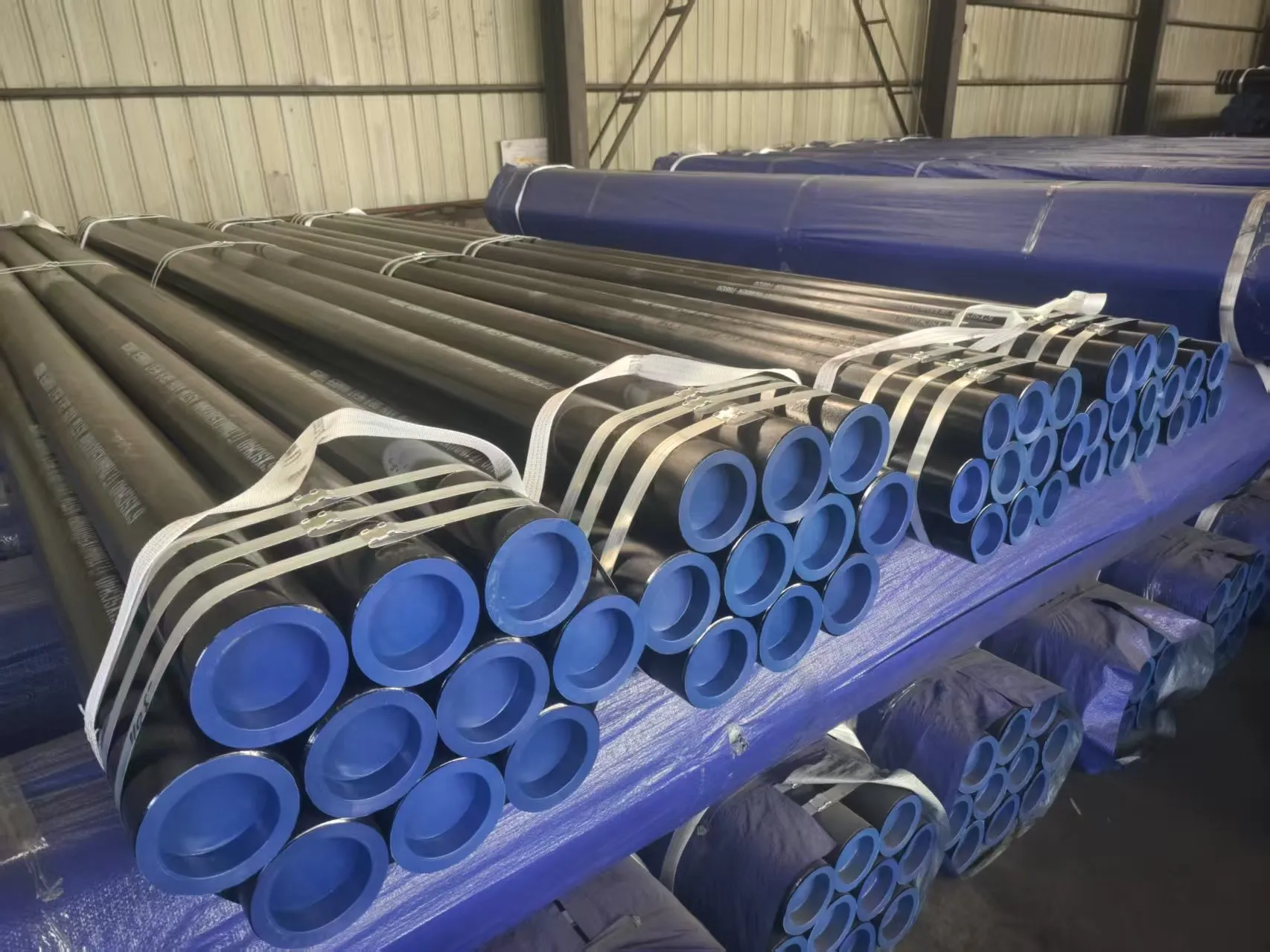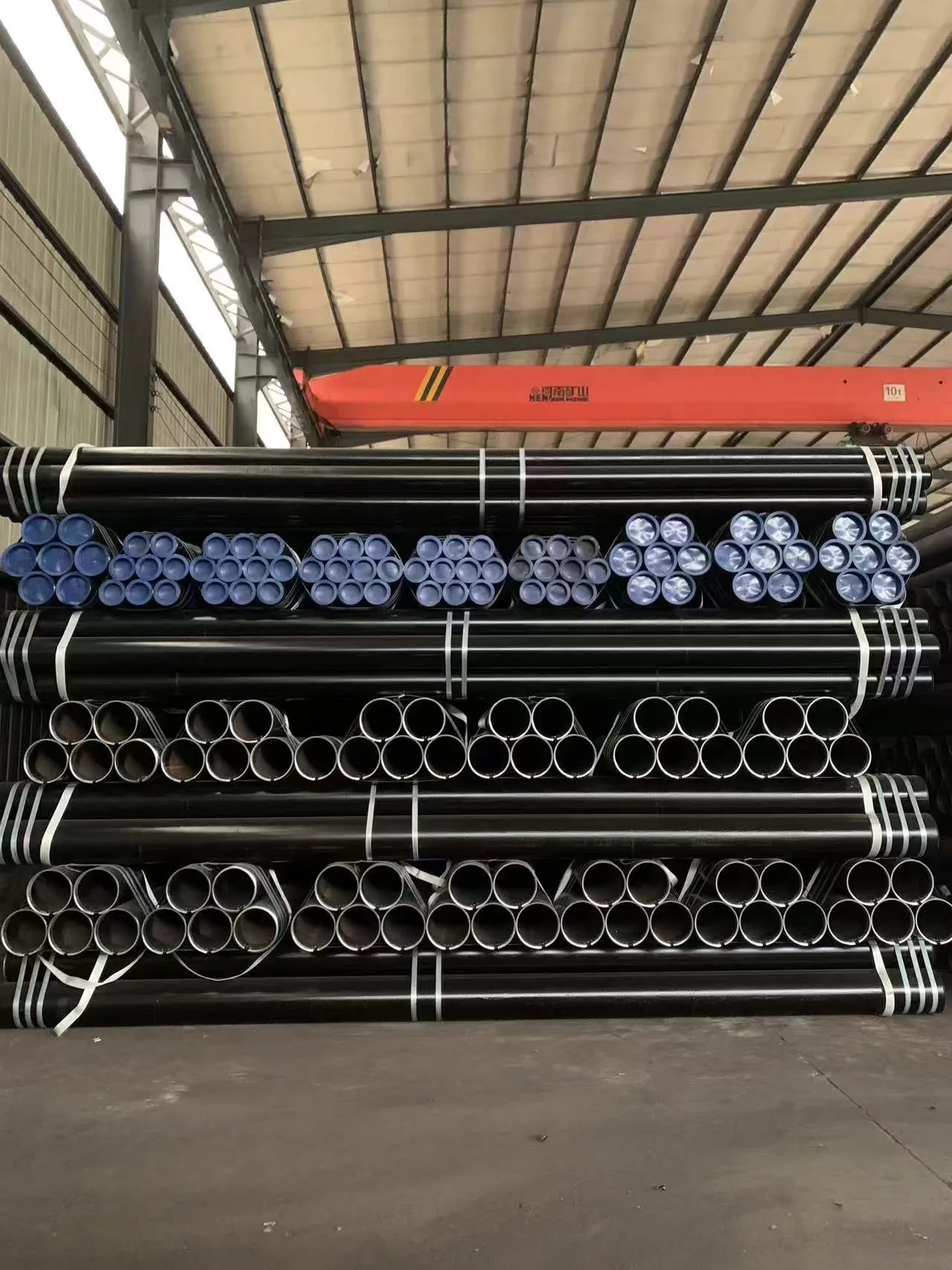Key Characteristics:
- 1.Material Composition:
- - API 5L X56 pipes are made from carbon steel, often incorporating small amounts of alloying elements to improve properties.
- - Typical chemical composition may include:
- - Carbon (C): ≤ 0.26%
- - Manganese (Mn): 1.20% - 1.60%
- - Phosphorus (P): ≤ 0.025%
- - Sulfur (S): ≤ 0.025%
- - Silicon (Si): ≤ 0.40%
- 2. Mechanical Properties:
- - Yield Strength: Minimum yield strength of 56,000 psi (386 MPa).
- - Tensile Strength: Typically ranges from 75,000 psi to 95,000 psi (517 MPa to 655 MPa).
- - Elongation: Depends on the pipe thickness but generally falls within the range of 18% to 20%.
- 3. Dimensions and Specifications:
- - API 5L X56 pipes are available in various sizes and wall thicknesses.
- - Nominal Pipe Sizes (NPS) can range from ½ inch up to 48 inches or larger.
- - Common standards for wall thickness include various schedules (e.g., Schedule 40, Schedule 80) based on application needs.
- 4. Manufacturing Process:
- - Pipes can be produced via two main methods:
- - Seamless: Providing higher strength and integrity, free from seams.
- - Welded:Made from flat steel plates or coils that are rolled and longitudinally welded.
- - Adherence to strict manufacturing standards ensures consistency in quality and performance, including non-destructive testing (NDT) techniques.
- 5. Coatings and Finishes:
- - API 5L X56 pipes may be offered with a variety of coatings to enhance corrosion resistance, such as:
- - Bare steel (uncoated)
- - Fusion Bond Epoxy (FBE)
- - Three-Layer Polyethylene (3LPE)
- - Three-Layer Polypropylene (3LPP)
- 6. Applications:
- - Primarily used in the oil and gas industry for transporting natural gas, oil, and other fluids.
- - Suitable for underground and high-pressure applications, providing the necessary durability and strength.
- - Used in infrastructure projects, including water supply systems.
- 7. Standards and Compliance:
- - API 5L X56 pipes adhere to several international standards and guidelines concerning pipeline manufacturing and testing, guaranteeing reliability and safety.
- - Additional compliance to body specifications such as ISO and ASTM may be necessary based on specific project requirements.
- 8. Testing and Quality Control:
- - API 5L X56 pipes are subjected to rigorous quality control measures, which may include:
- - Hydrostatic tests to verify strength and detect leaks.
- - Non-destructive testing (like ultrasonic or radiographic examinations) to ensure material integrity.
- - Mechanical testing to confirm yield and tensile properties.
- Summary:
- API 5L X56 pipes are designed for strong and reliable performance in transportation applications within the oil and gas sector and other industrial uses. With a minimum yield strength of 56,000 psi, these carbon steel pipes provide necessary durability in high-pressure environments. When selecting API 5L X56 pipes, factors such as pipe diameter, wall thickness, coating options, and compliance with relevant standards should be carefully considered to ensure optimal performance in their intended applications. Regular inspection and maintenance are crucial for ensuring long-term durability, reliability, and safety in pipelines.
Write your message here and send it to us
















